Webmaster’s note: some of the historic mines presented on this site are still active today and are producing stunning gold specimens that fetch thousands, or even tens of thousands of dollars each. This article highlights some of the recent samples and locations from recent decades.
Article By Gary Carter
Photos courtesy of Gold Room – The Mineral Gallery, The Miner’s Lunchbox, and Goldnuggetsforsale.com.
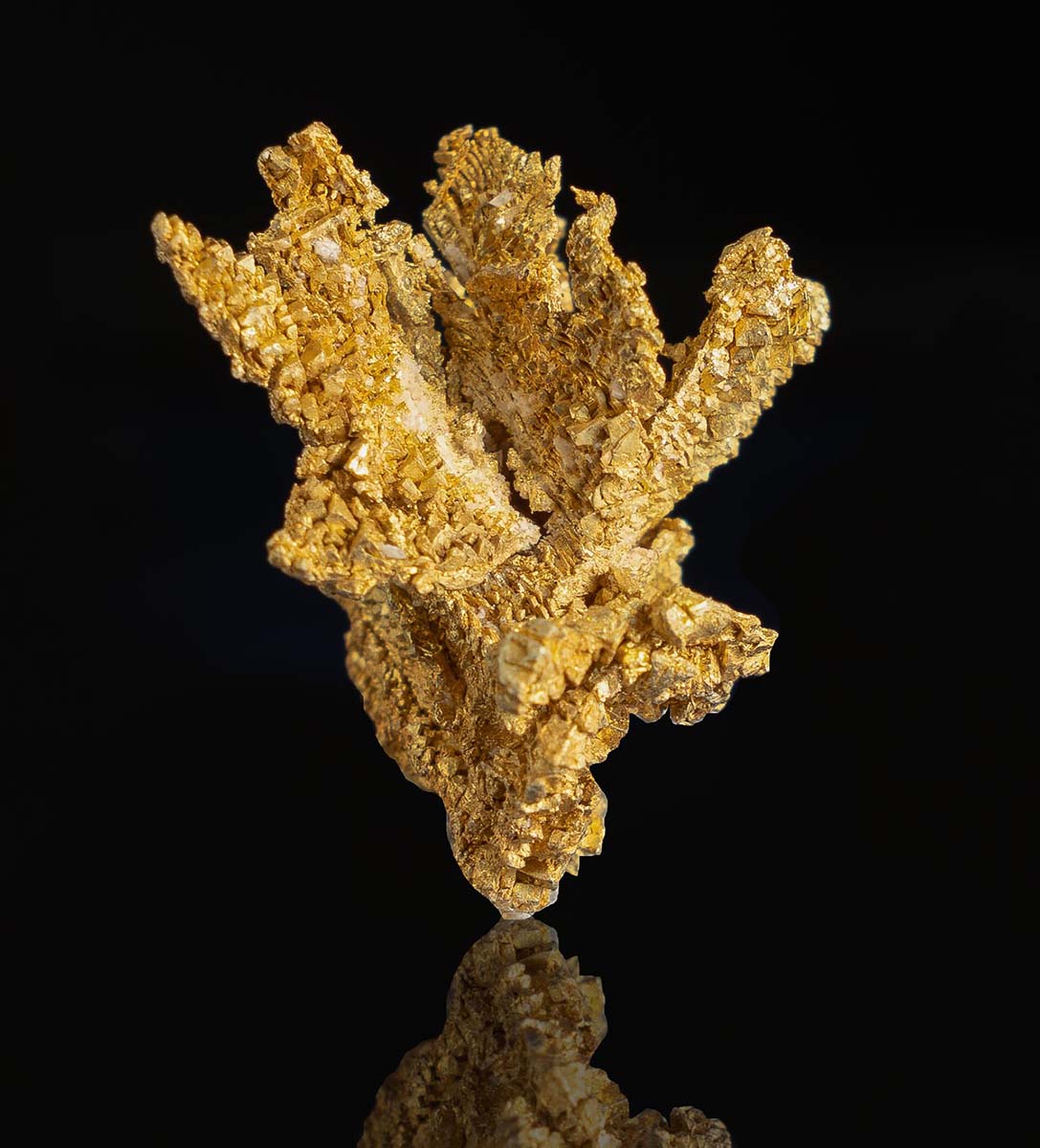
Author’s Note
Writing an article on gold specimens is analogous to writing about stars in the sky! Where does one begin and end? There is no way to do justice to the subject. Does size matter, does uniqueness, matrix, color, aesthetics? Do you just discuss nuggets or matrix gold specimens? Many articles and books have been written about gold.
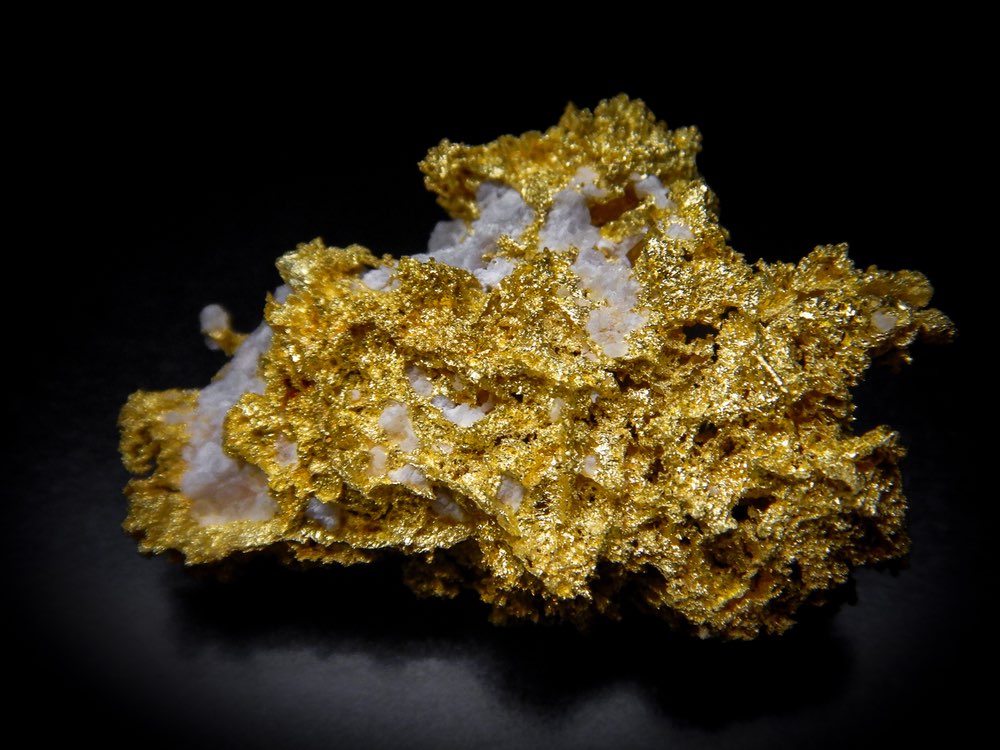
The emphasis in this article will be on quality gold specimens found in the last 20-30 years in the western United States. I have endeavored to let those with more experience and knowledge guide me and am indebted to them for suggesting specimens they feel standout, are unusual, colorful, or particularly aesthetic.
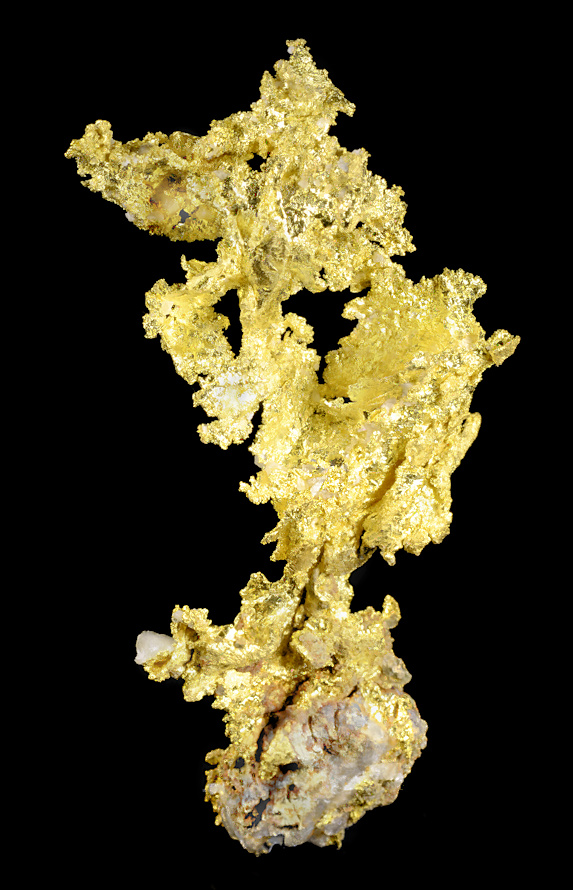
Most known gold localities are no longer actively producing on a large scale or are actively mined as open pits, and the prospect of a nice nugget or matrix specimen is low. That is not to say that good size and quality nuggets are not being found, and good matrix specimens are still uncovered in old mines, now worked in the hopes of finding “pocket gold” specimens.
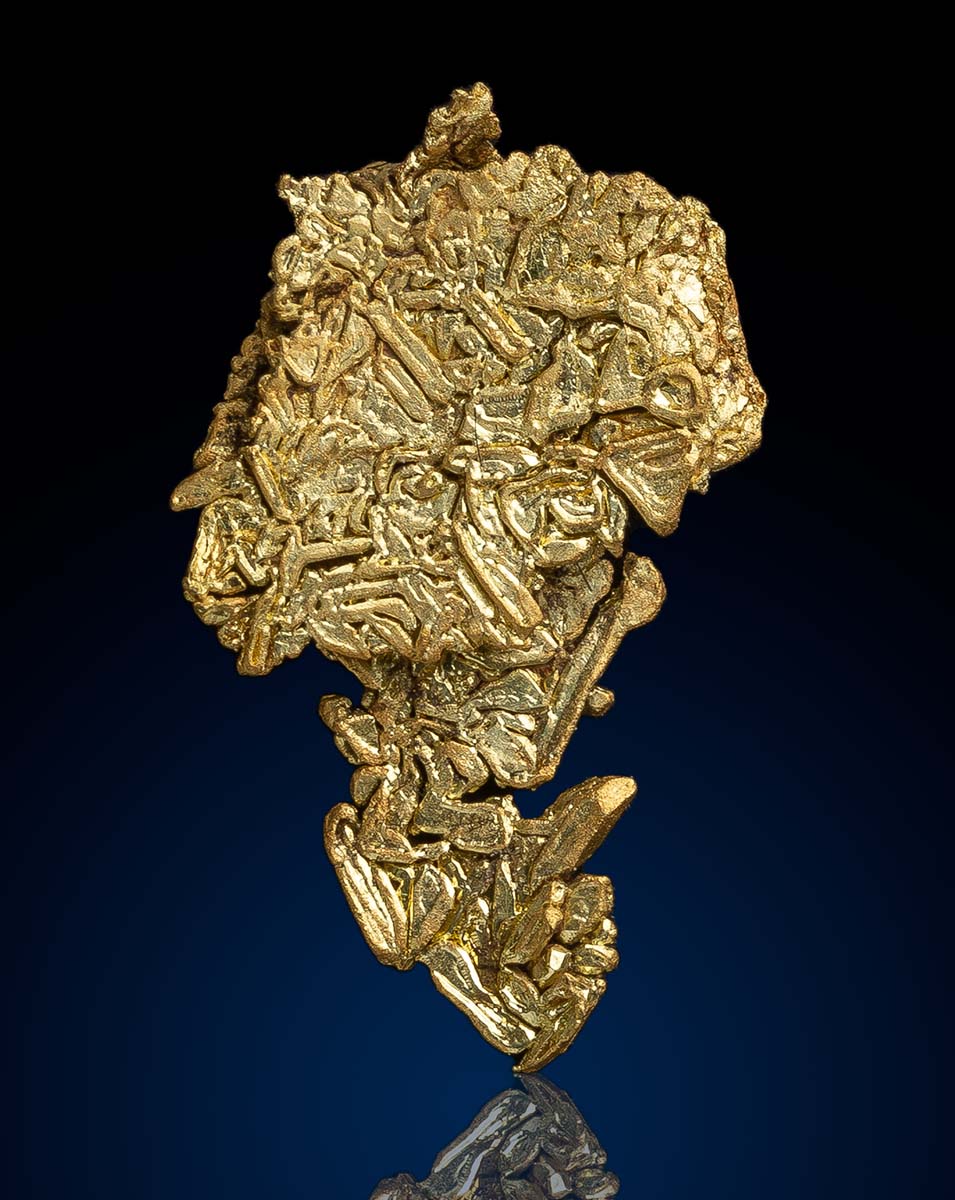
Specimen Gold From Western States
The majority of modern producing gold fields are open pit mines where gold values as low as .005 ounces per ton can be profitable (especially at $1700 + an ounce). The big deposits at Cripple Creek-Victor, Colorado and the Carlin Trend in Nevada are perfect examples, yet they seldom produce spectacular specimens.
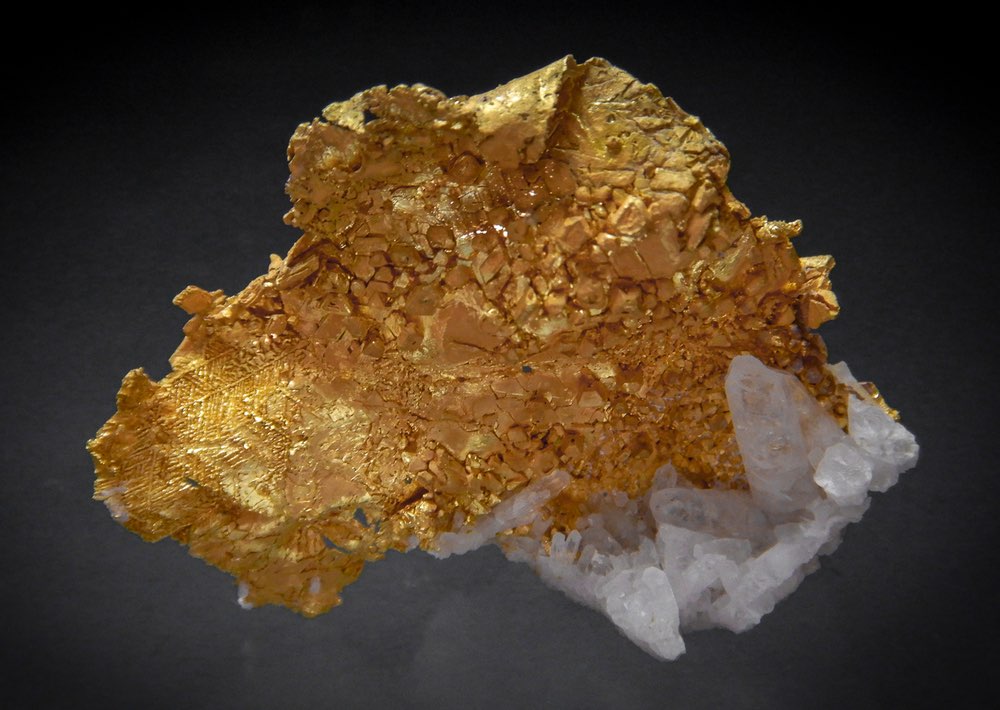
There are exceptions but open pit operations generally are not the places where specimen gold is found, Virtually all of the gold from the open pit mines is crushed and processed using some form of the cyanide process.
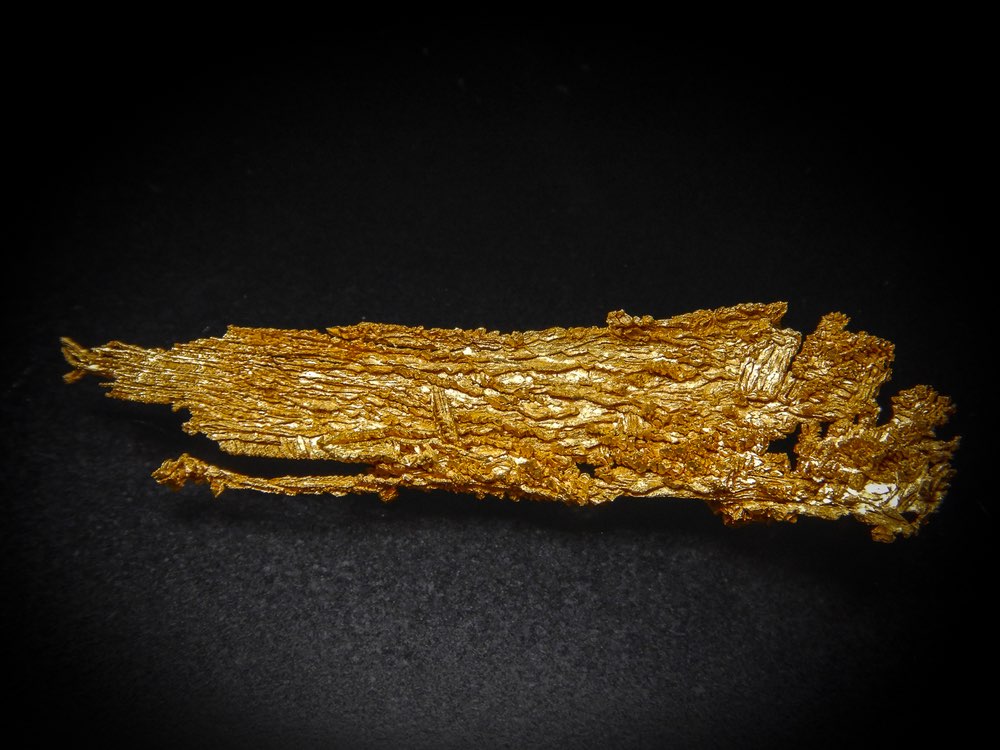
Nevada’s Round Mountain operation is an exception, having produced notable “specimen gold.” Metal detecting has paid off with nice finds in this area.
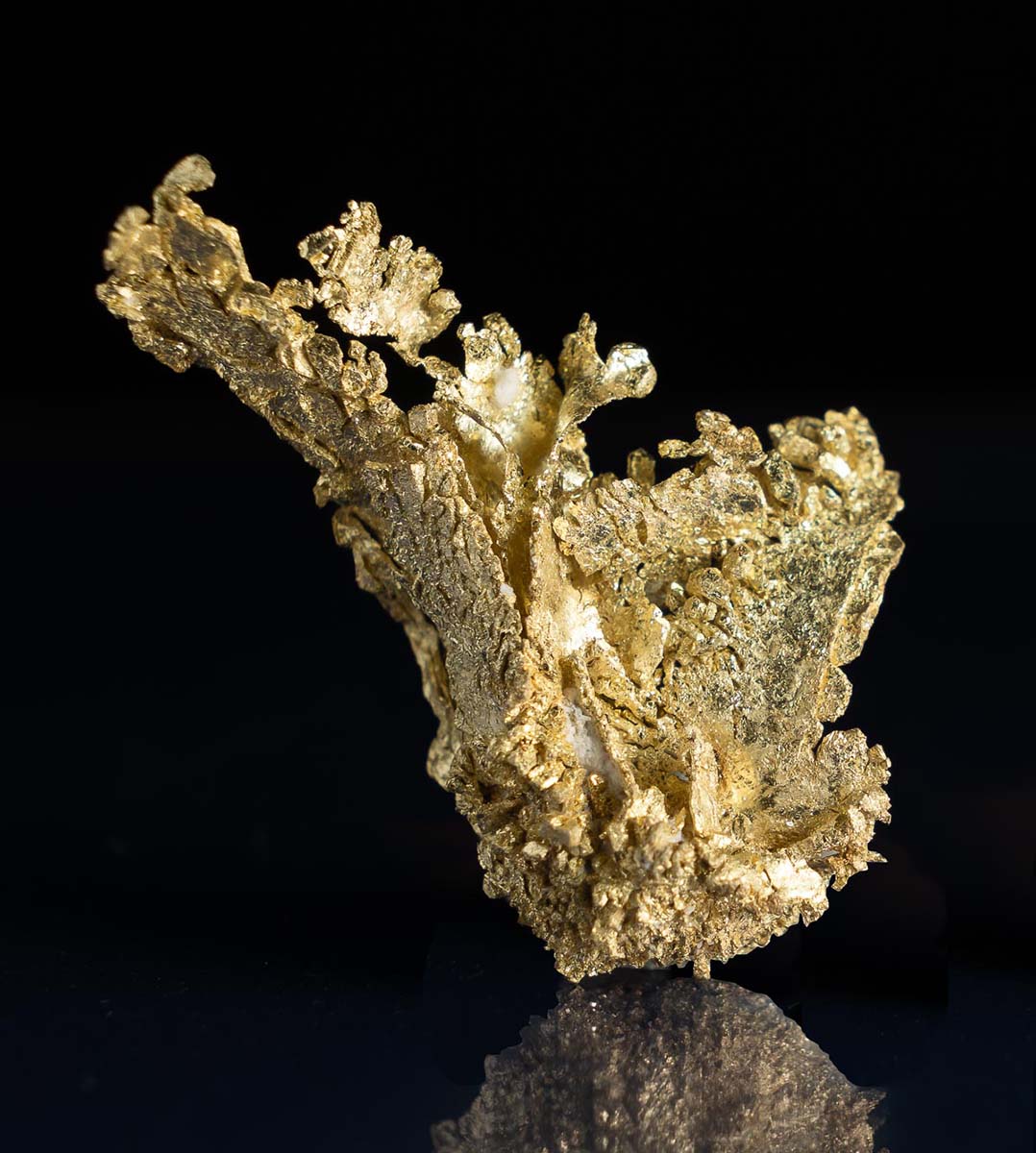
The website Goldnuggetsforsale.com describes the rarity of Round Mountain specimen gold: “These phenomenonal high grade gold veins were discovered in the late 1990’s at this Nevada location and set off a frenzy in the natural gold world as gold of this caliber was extremely rare and unlike any other gold in the world.”
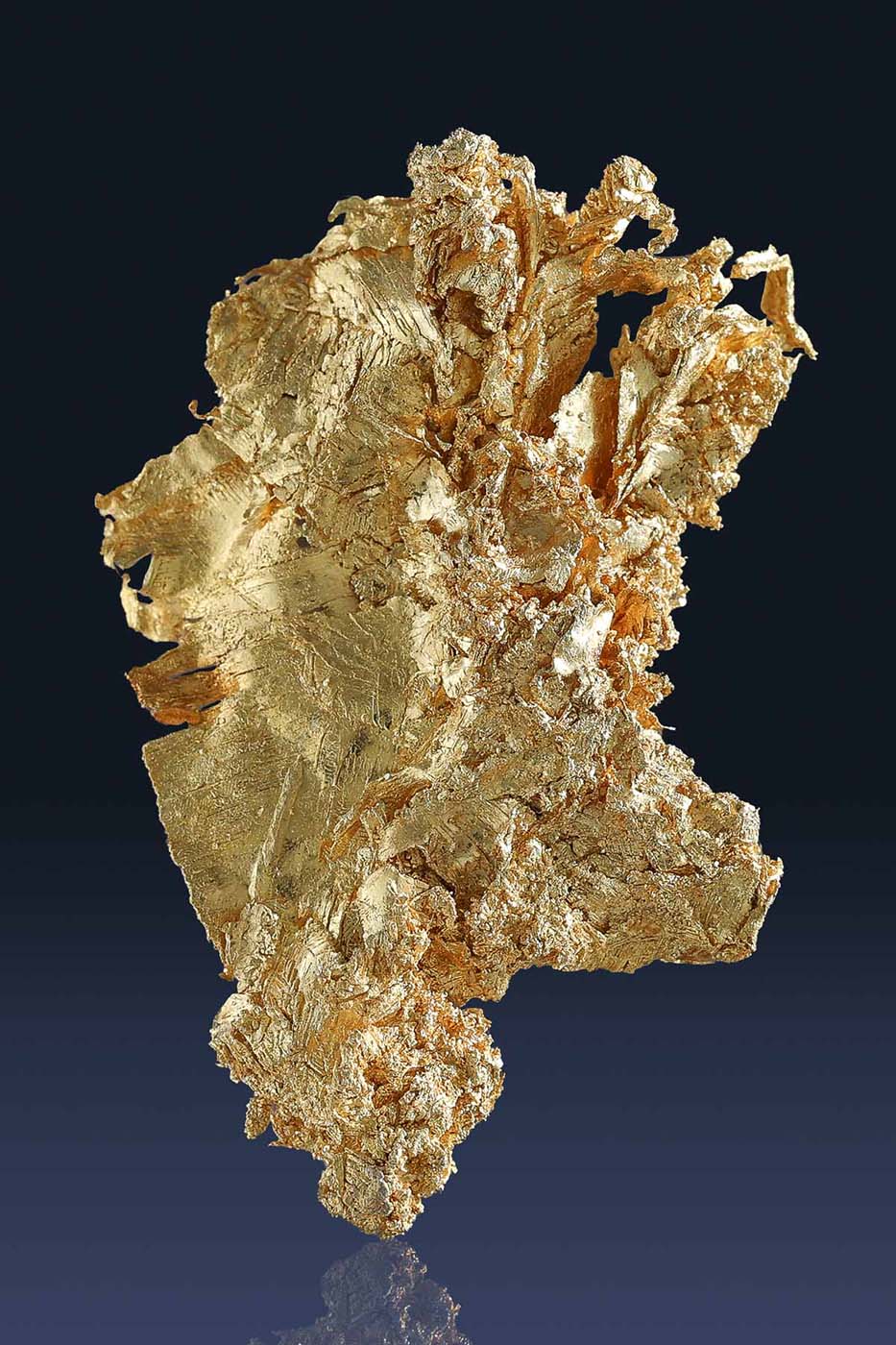
“The gold is now considered some of the best crystalized gold in the world and is very rare now that the mine is no longer finding or preserving any crystallized gold.”
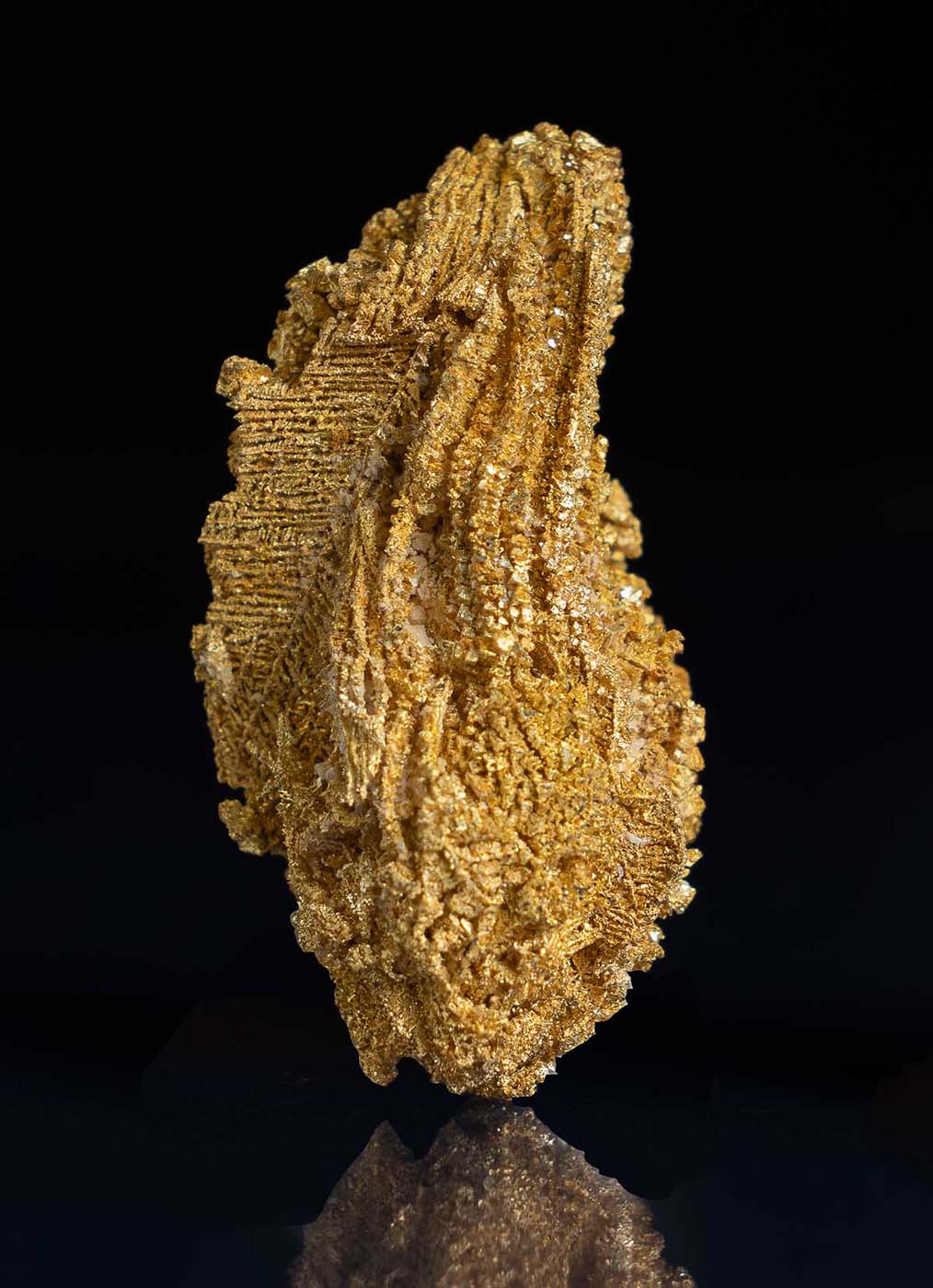
At Olinghouse, another Nevada location, specimen gold is generally small and either crystalline or tight wires forming nest like structures.
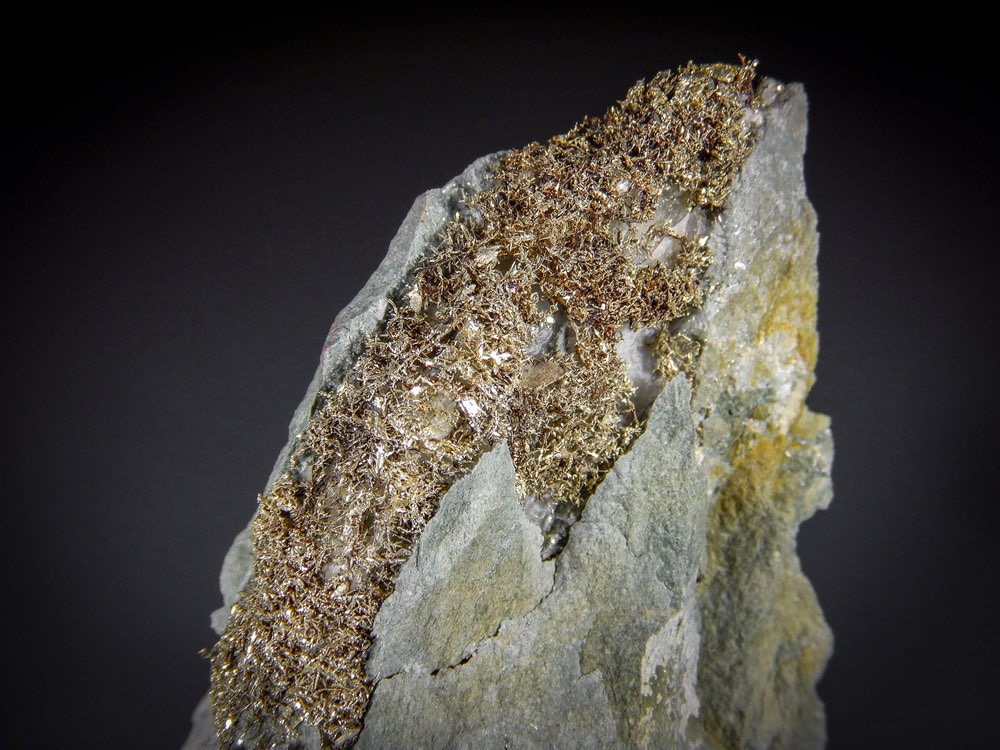
Elsewhere in the United States, owners in many of the old gold rush districts, especially California, have turned to specimen mining and have been rewarded by finding “pocket gold”.
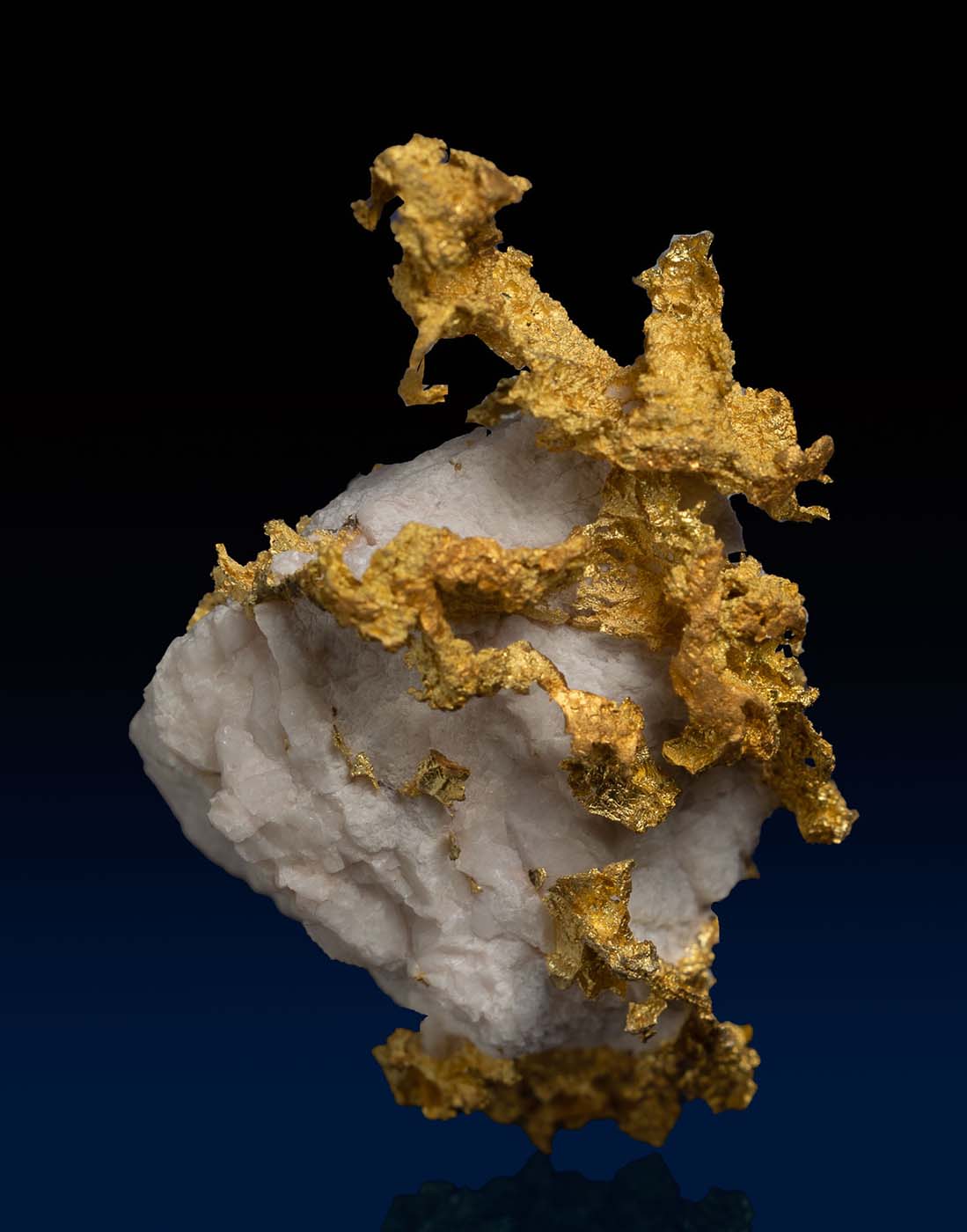
Examples of these California mines would be the Oriental, 16-1, Eagles Nest, Artru, Colorado Quartz mine, Black Diamond and Red Ledge mines.
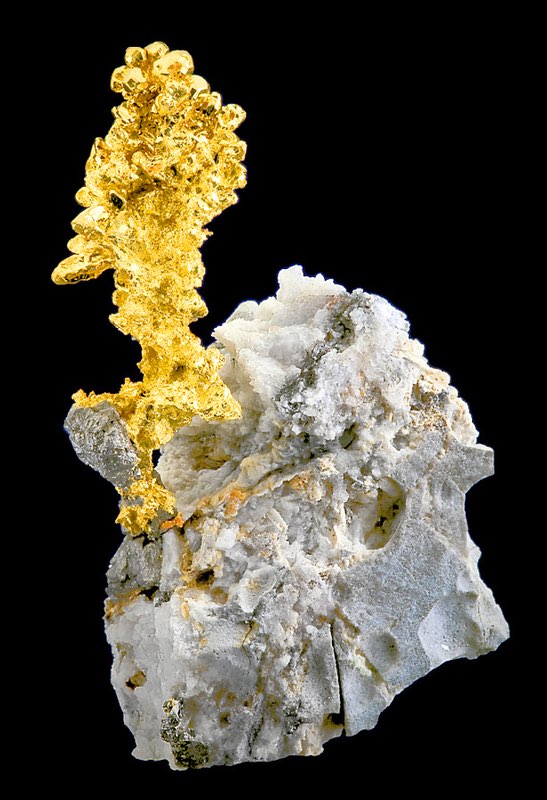
Likewise the Belshazzer in Idaho, and the Fort Knox Mine in Alaska are currently supplying some nuggets and matrix gold specimens. Nuggets from Alaska are common but matrix specimens of any size are not.
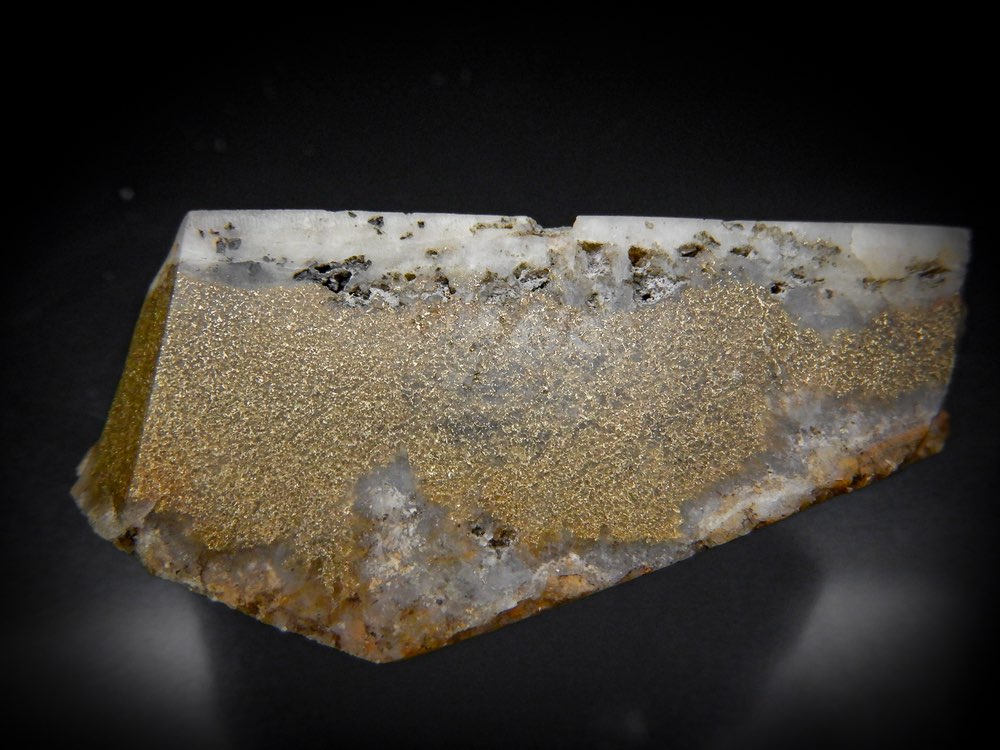
Quality gold specimens that have come from fairly recent finds (past 20-30 years) are most numerous as placer nuggets of thumbnail (3cm max.) size. Specimen gold with matrix are more uncommon and very few are above small cabinet size (7.5 cm). That probably bodes well for collectors as larger specimens of either type will demand a hefty price, generally more than the spot price of gold.
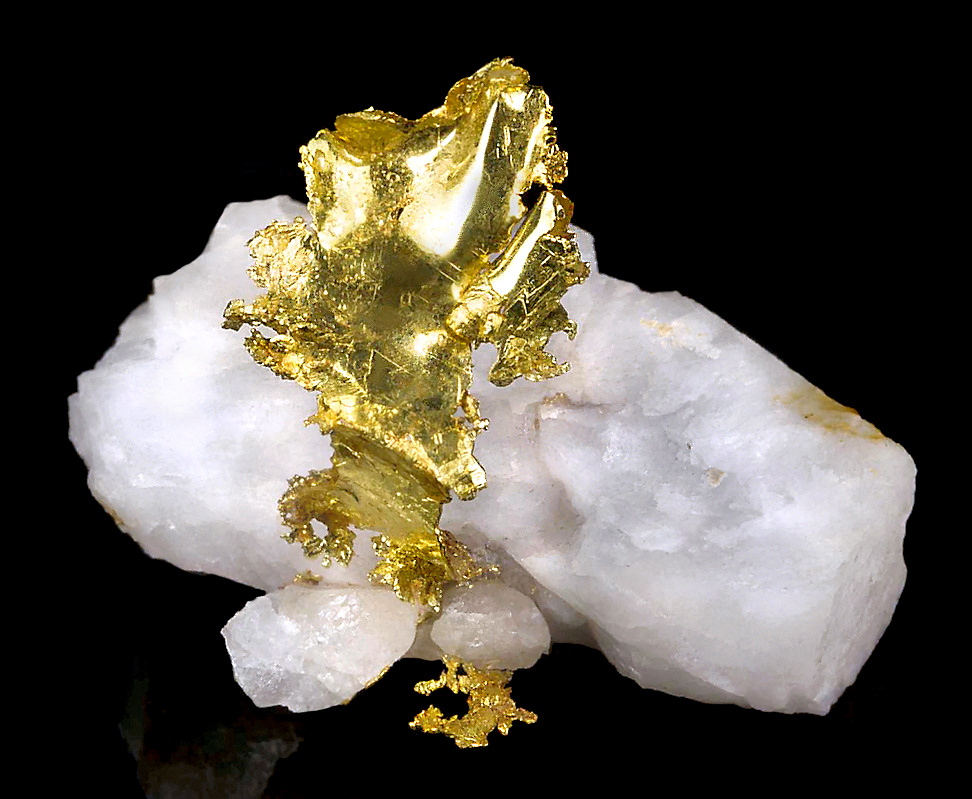
Gold collectors are often experienced and knowledgeable enough to know by appearance and structure where the specimen originated, especially with matrix specimens more so than nuggets. Public museums and universities often have gold collections, while the Tucson Gem and Mineral Show will generally feature nice specimens.
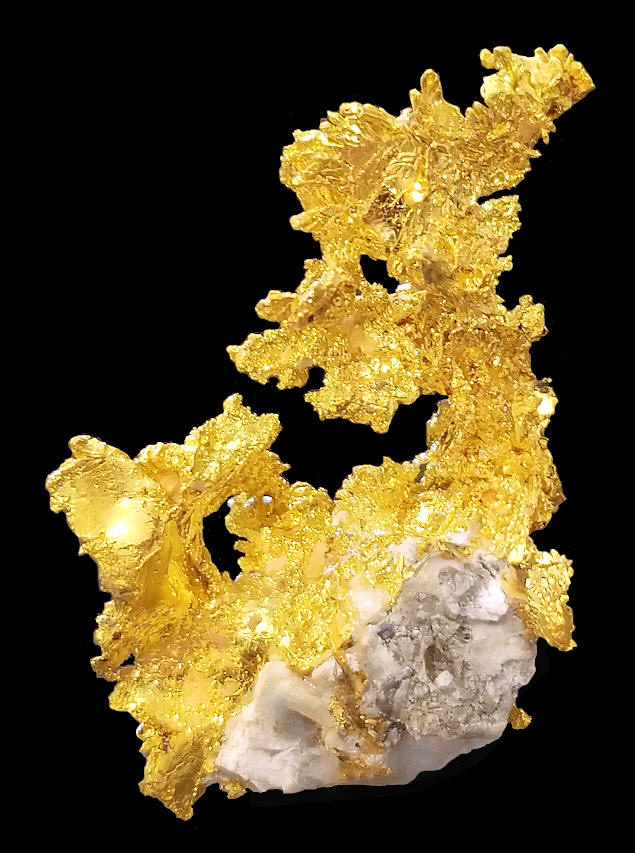
Private dealers selling mineral specimens are currently the best source to buy quality nuggets and matrix gold.
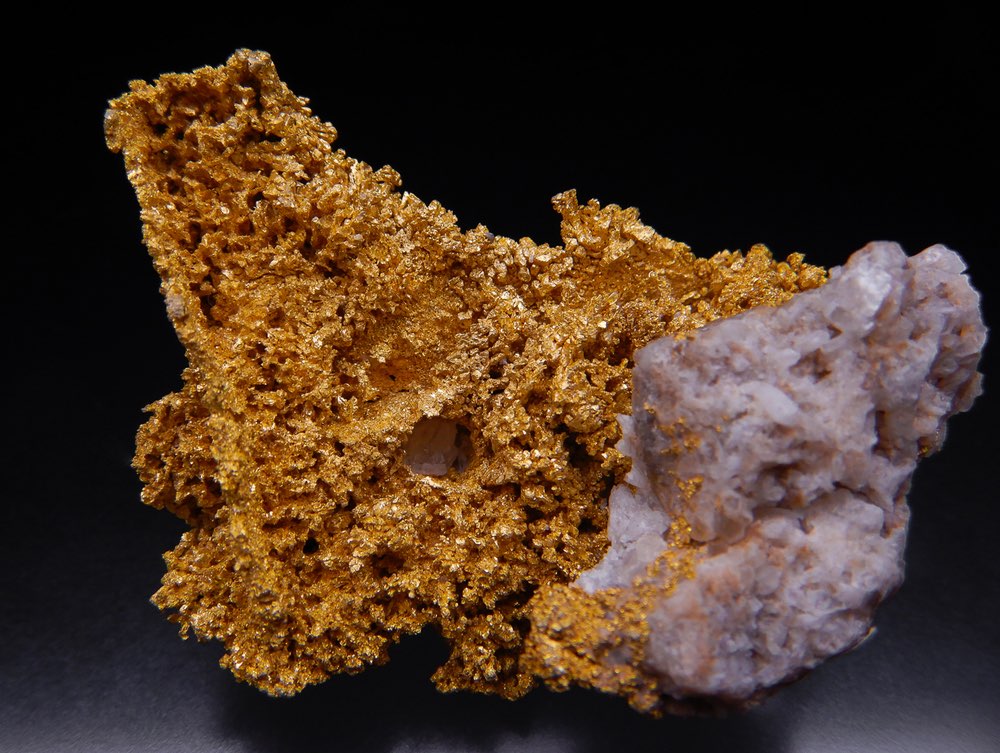
The photographs that accompany this article represent just a small portion of the notable specimens coming from mines in the western states during the past 20-30 years.
The Top Ten Gold Producing States
These ten states contributed the most to the gold production that built the West from 1848 through the 1930s. Read more at The Top Ten Gold Producing States.
Where To Find Gold: The Top Ten US Counties
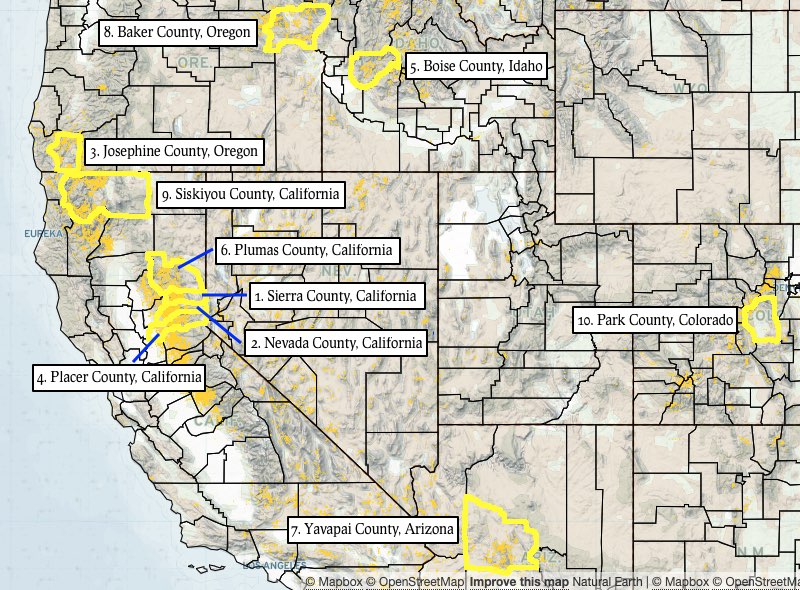
By looking at where placer claim density is highest, and where those placer claims correspond with historical gold mine locations, we can determine what US counties have the highest potential for gold discovery. Where To Find Gold: The Top Ten US Counties identifies the top ten counties for placer gold discovery potential.
